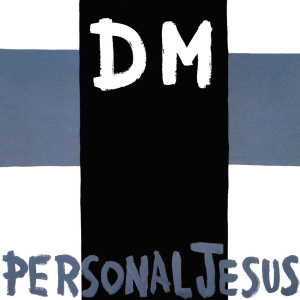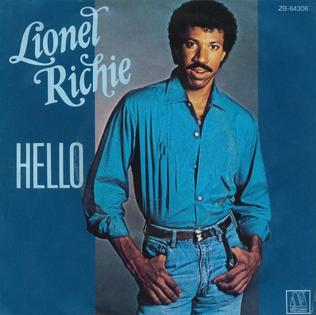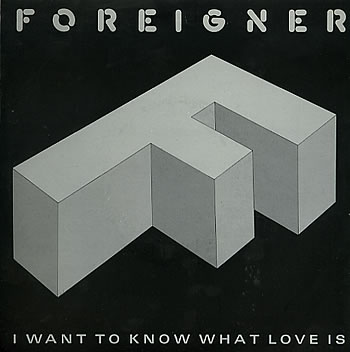 By 1981, the British pop landscape was full of shifting sounds and bold fashion—punk had burned itself out, new wave was rising, and synthpop was taking hold. But then came Adam Ant, swaggering out of the ashes of punk’s fury with feathers, face paint, and a highwayman’s sneer. His single “Stand and Deliver,” backed by his band Adam and the Ants, wasn’t just a song—it was a cultural statement. A flamboyant act of defiance wrapped in tribal drums, new romantic flair, and pure charisma.
By 1981, the British pop landscape was full of shifting sounds and bold fashion—punk had burned itself out, new wave was rising, and synthpop was taking hold. But then came Adam Ant, swaggering out of the ashes of punk’s fury with feathers, face paint, and a highwayman’s sneer. His single “Stand and Deliver,” backed by his band Adam and the Ants, wasn’t just a song—it was a cultural statement. A flamboyant act of defiance wrapped in tribal drums, new romantic flair, and pure charisma.
“Stand and Deliver” isn’t merely a pop hit; it’s an anthem for the stylish outlaw, a wink at rebellion dressed in lace and leather. It captures everything that made Adam Ant an icon: humor, self-awareness, and a sense of theater so large it practically burst off the screen of early MTV. At its core, it’s about the art of confidence—how to wear your eccentricities like armor and demand the world pay attention.
The Rise of the Ant Army
To understand “Stand and Deliver,” you have to understand its creator. Adam Ant (born Stuart Goddard) wasn’t content to just play music—he wanted to create myth. After dabbling in the early punk scene, he reinvented himself completely, combining rock’s aggression with a theatrical sense of history. By 1980, with Kings of the Wild Frontier, Adam and the Ants were leading a new kind of charge. Their sound was built around the Burundi beat—a thunderous double-drum rhythm inspired by African percussion—and a visual aesthetic that fused 18th-century romanticism with post-punk defiance.
When “Stand and Deliver” arrived in April 1981, it took everything that made Kings of the Wild Frontier exciting and turned it up to eleven. This was not a song meant to hide in the shadows. It was bold, brazen, and impossible to ignore—a declaration that Adam Ant was here to steal the spotlight, and he wanted everyone to know it.
A Dandy with a Mission
The song opens with a rolling tribal drumbeat that immediately commands attention. Before a single word is sung, the energy is already pulsing—those layered percussions and guitar stabs creating a sense of motion, as if the band is galloping into battle. Then comes Adam’s unmistakable voice, half-sung, half-shouted, drenched in theatricality:
“Stand and deliver, your money or your life!”
It’s both a threat and an invitation. The line references the classic cry of 18th-century highwaymen—dashing outlaws who robbed the rich with flair. But Adam Ant isn’t really talking about crime. He’s talking about style, identity, and the courage to perform. It’s a metaphor for artistic audacity—demanding attention, taking risks, and refusing to conform.
He’s the “dandy highwayman,” a figure that perfectly encapsulates his ethos: part rebel, part romantic, part fashion statement. “Stand and Deliver” isn’t just a pop song; it’s a manifesto for the outsider who refuses to apologize for standing out.
The Sound of Bold Reinvention
Musically, “Stand and Deliver” is a masterclass in controlled chaos. The production, helmed by Chris Hughes and Adam Ant himself, is dense but dynamic—every drum hit, guitar strum, and vocal chant meticulously placed to create a sense of tribal urgency.
The signature Burundi beat is front and center, with dual drummers Terry Lee Miall and Chris Hughes giving the track its unmistakable rhythm. The guitars, played by Marco Pirroni, slice through the mix like sabers—jagged yet melodic. His riffs have a swagger to them, a confidence that perfectly matches Adam’s delivery.
And then there’s the chorus, which feels almost like a battle cry. The group chants—“Stand and deliver!”—are layered with harmonies that turn defiance into celebration. It’s an anthem not of anger, but of exuberance. Even the use of reverb and echo gives the track a cinematic quality, as if it’s unfolding on a grand stage rather than a recording booth.
“Stand and Deliver” sounds like a revolution dressed in makeup. It’s theatrical, but it’s not empty; every flamboyant gesture is backed by precision and purpose.
Lyrics that Strut and Sneer
Lyrically, the song is as sharp as its rhythm. Adam Ant had a gift for writing lines that balanced humor and bite, and “Stand and Deliver” showcases that perfectly. He mocks pretension and conformity while celebrating individuality:
“I’m the dandy highwayman / Who you’re too scared to mention / I spend my cash on looking flash / And grabbing your attention.”
It’s cheeky, self-aware, and completely charming. Adam Ant turns vanity into rebellion—being stylish and self-assured becomes an act of power. There’s something deeply punk about that idea, even if the sound had evolved far beyond punk’s stripped-down aggression.
He goes further in skewering the upper-class moralizers who might sneer at his flamboyance:
“What’s the point of robbery / When nothing is worth taking?”
That line cuts deep—it’s as much a critique of materialism as it is a celebration of artistic theft. Adam’s highwayman doesn’t want your money; he wants your admiration, your energy, your participation. He’s stealing the spotlight, not your silver.
Throughout the song, he mixes humor with authority, irony with sincerity. It’s performance as philosophy. And that’s what made Adam Ant different from his contemporaries—he wasn’t just singing pop songs; he was building an entire mythology.
The Power of Image
“Stand and Deliver” is one of those rare tracks where the visual presentation is inseparable from the music itself. The music video, directed by Mike Mansfield, remains one of the defining visuals of the early MTV era. Dressed as an 18th-century highwayman complete with plumed hat, velvet jacket, and military regalia, Adam Ant leapt from chandeliers, kissed hands, and swung from ropes with the charisma of a rock ’n’ roll Errol Flynn.
The video was pure theater, and it fit the song perfectly. It also cemented Adam Ant’s status as one of the most stylish figures of his generation. Before MTV had fully conquered the world, he understood the power of visuals to enhance music. The combination of his painted face, soldier’s jacket, and pirate bravado became instantly iconic—a look that would influence everyone from Boy George to Prince to countless 1980s pop acts.
But the key to Adam Ant’s image was authenticity. His flamboyance didn’t feel manufactured; it felt like an extension of his creative energy. Every gesture, every costume choice, every wink was part of a larger performance that fused fashion, humor, and rock energy into something uniquely his own.
Cultural Impact: From Pop to Myth
When “Stand and Deliver” hit number one on the UK Singles Chart in May 1981, it wasn’t just a success—it was a cultural event. It stayed at the top for five weeks, outselling nearly everything else that year. In a landscape full of post-punk seriousness and electronic experimentation, Adam Ant offered something unapologetically fun and theatrical.
But make no mistake—this wasn’t throwaway pop. It was a sophisticated act of reinvention. The Ants’ sound bridged genres, combining the rhythmic intensity of world music with the sharp edges of new wave and the glam of classic rock. Adam Ant himself was both frontman and ringmaster, orchestrating a sound and image that felt totally new.
His influence can be felt in everything from the visual extravagance of Duran Duran and Spandau Ballet to the eccentric showmanship of later artists like Lady Gaga. He helped define what pop could be when it stopped apologizing for being theatrical.
Between the Lines: Rebellion Reimagined
At its heart, “Stand and Deliver” is about performance as resistance. It takes the outlaw mythology of old England and turns it into a metaphor for artistic rebellion. The “dandy highwayman” isn’t robbing people—he’s liberating them from boredom and conformity.
That’s what makes the song timeless. It’s not just a product of 1981; it’s a statement about self-expression that still resonates today. The idea that you can redefine yourself, wear your confidence like armor, and turn creativity into defiance—those are themes that never go out of style.
Adam Ant didn’t need to snarl or destroy instruments to make his point. His rebellion came through elegance, humor, and control. Where punk said “tear it down,” “Stand and Deliver” said “dress it up, make it art, and make them watch.”
The Ants Go Marching On
“Stand and Deliver” was the peak of Adam and the Ants’ dominance. The album Prince Charming followed, producing more hits like “Ant Rap” and the title track, but nothing quite captured the same lightning-in-a-bottle magic. This was Adam Ant at his creative zenith—commanding, fearless, and completely in control of his artistic vision.
After the Ants disbanded, Adam launched a solo career that produced hits like “Goody Two Shoes” and “Strip,” but “Stand and Deliver” remained his signature track. It’s the perfect distillation of his entire aesthetic—half history lesson, half glam rock fantasy, all charisma.
Over the years, the song has maintained its cultural presence, popping up in film, TV, and even advertising. Its enduring popularity proves that its core message—of style as substance, of art as attitude—still speaks to audiences across generations.
Why It Still Matters
What makes “Stand and Deliver” so enduring is that it’s pure confidence captured in sound. It’s a reminder that music doesn’t have to choose between substance and spectacle—it can be both. Adam Ant understood that art should engage the eyes as much as the ears, and “Stand and Deliver” stands as the ultimate example of how far charisma and creativity can take you.
There’s also a deeper emotional truth hidden under all that swagger. Adam Ant’s dandy highwayman is an outsider who reinvents himself to survive—a metaphor for anyone who’s ever felt out of place but refused to fade into the background. The song invites the listener to do the same: to own their eccentricities, to stand tall, to deliver.
Even now, more than four decades later, it feels empowering. Play it loud, and suddenly you’re walking taller, your step has rhythm, and your reflection in the mirror looks a little more daring. That’s the power of “Stand and Deliver.”
Final Thoughts: The Art of the Outlaw
“Stand and Deliver” isn’t just one of the greatest songs of the early 1980s—it’s one of the boldest statements in pop history. It’s witty, percussive, stylish, and self-aware, embodying everything that makes Adam Ant a true original.
It takes the energy of punk, the gloss of new wave, and the eccentricity of glam, then turns them into something gloriously theatrical. It’s not rebellion through destruction—it’s rebellion through decoration.
Over forty years on, Adam Ant’s rallying cry still rings true: style and substance aren’t enemies—they’re partners in crime. So go ahead—paint your face, strike your pose, and dare the world to look away.


